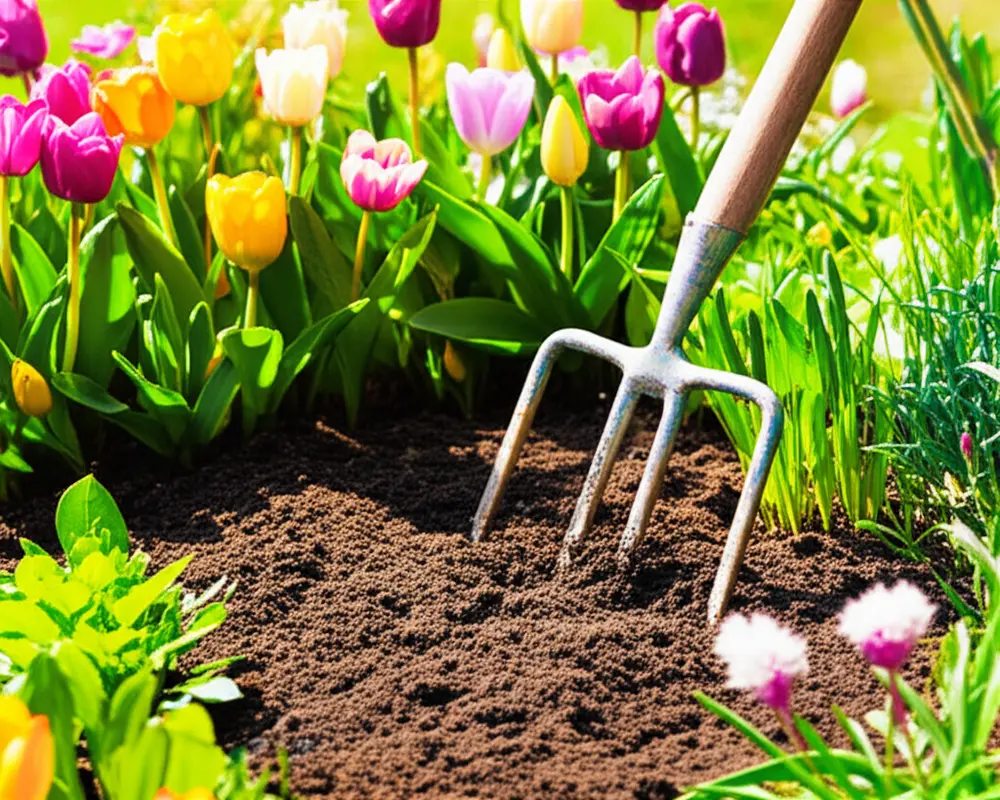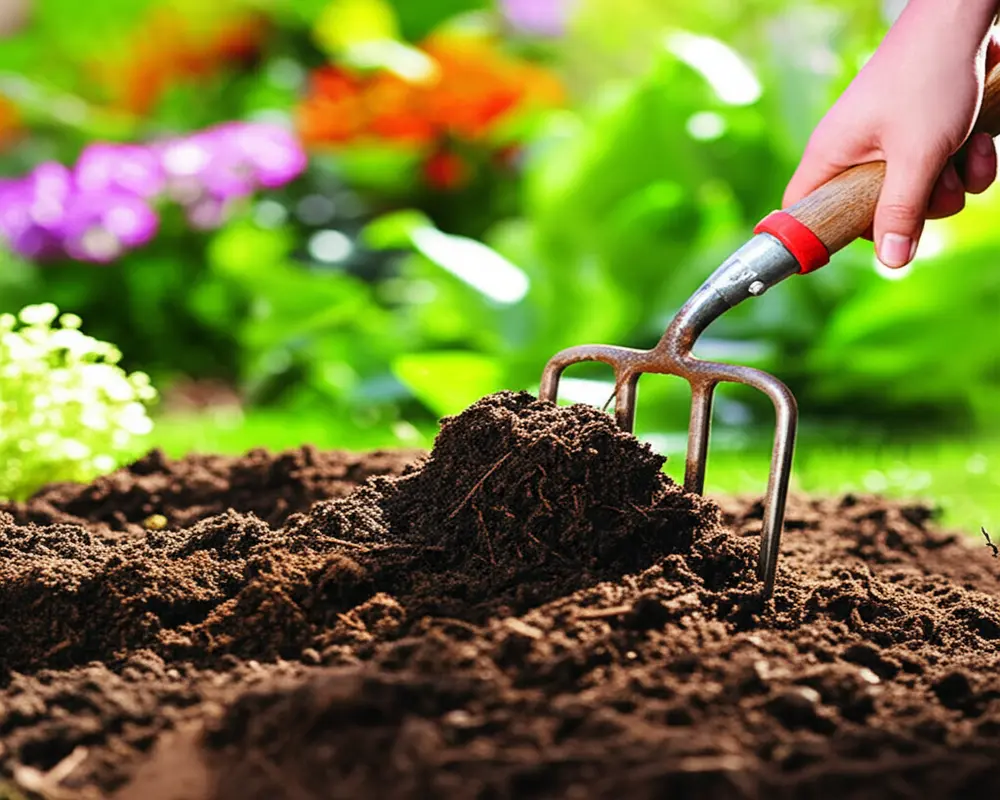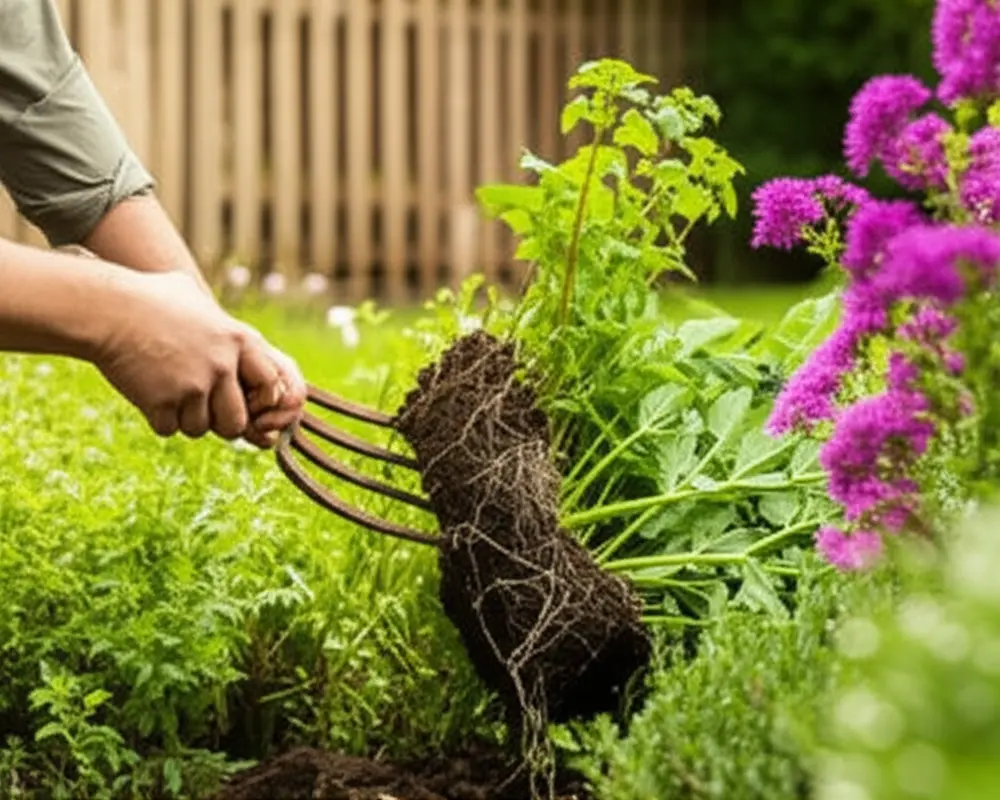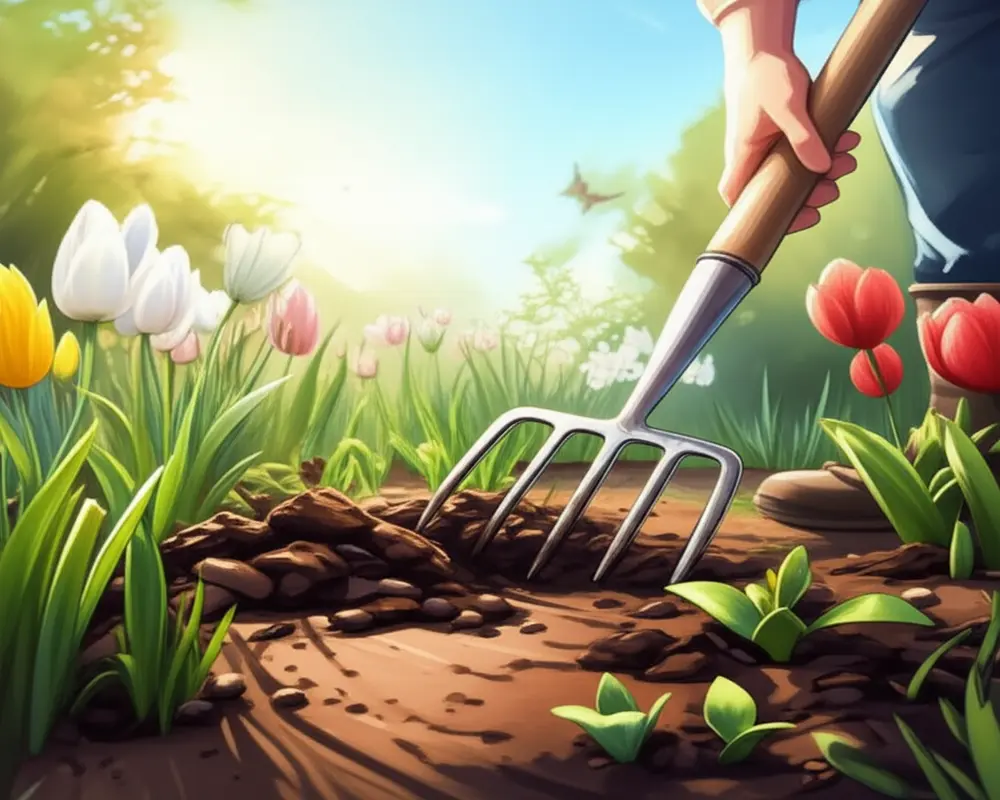The Essential Guide to Spring Garden Fork Tasks for a Thriving Garden
1. Introduction: Unearthing Your Spring Garden’s Potential with a Fork
The garden fork is an essential tool that goes beyond what a spade offers, especially for spring soil preparation and nurturing plant growth. Spring is a critical season when soil conditions shift and plants prepare to flourish, making the garden fork invaluable for unlocking your garden’s full potential.
Thank you for reading this post, don't forget to subscribe!During early spring, soil tends to be heavier and may retain winter moisture, while late spring usually brings drier and warmer conditions. Understanding these differences shapes the best time and techniques to use the garden fork for optimal results.
The core benefits of employing a garden fork this season include improved soil aeration, enhanced drainage, better nutrient absorption, and healthier root development — all of which lead to a thriving garden.
2. Before You Dig: Essential Pre-Task Considerations
Before wielding your garden fork, it’s crucial to assess the soil’s readiness. One practical method is the “squeeze test”: take a handful of soil and squeeze it. If it crumbles easily when released, the soil is well-prepared; if it stays clumped together, it may be too wet or compacted, risking damage when worked.
Selecting the right type of garden fork for your needs matters. A digging fork, with sturdy tines, excels for breaking hard soil, whereas a border fork offers lighter tines suited for delicate tasks, and a broadfork can aerate larger areas gently without overturning the soil structure.
Also, consider ergonomics and safety. Maintain proper posture by bending your knees and using your legs to leverage the fork rather than straining your back. This approach helps prevent injuries during extensive digging or lifting tasks.
3. Core Spring Garden Fork Tasks: Step-by-Step Guides & Benefits
3.1 Aerating Compacted Soil & Improving Drainage
Aerating soil involves loosening compacted earth to allow air, water, and nutrients to penetrate deeply. This task is vital in spring to counteract soil compaction caused by winter freeze-thaw cycles or heavy foot traffic.
To aerate, gently insert the fork’s tines vertically into the soil, rock the fork back and forth to break up the compact layer, then lift the soil slightly. For clay soils, focus on careful rocking to avoid clumping, while sandy soils require less force but benefit from more frequent aeration points spaced about 12 inches (30 cm) apart.
Aeration promotes robust root growth and helps prevent waterlogging, enabling your plants to access the resources they need for vigorous development.

3.2 Incorporating Organic Matter & Amendments
Enhancing soil fertility through organic matter is a cornerstone of spring garden care. This involves mixing compost, aged manure, or soil amendments into your garden beds using the fork.
Start by spreading your organic amendments evenly over the soil surface, then turn and mix the top few inches with the garden fork. To enrich deeper layers, work the soil in stages, layering the material down to 6 to 8 inches (15 to 20 cm).
This practice improves soil structure, boosts fertility, and supports a thriving community of beneficial soil microbes essential for nutrient cycling and plant health.

3.3 Preparing Garden Beds for Planting
Creating the right environment for seeds and transplants defines your planting success. Use the garden fork to break apart large soil clods, refine the soil into a fine tilth, and open trenches for root crops like carrots or beets.
Level and firm the beds gently to maintain soil aeration but ensure consistent moisture distribution. This preparation facilitates root penetration and promotes uniform germination.
3.4 Lifting & Dividing Perennials
Spring is also an excellent time to rejuvenate your perennial plants by lifting and dividing crowded clumps. Insert the fork around the plant’s drip line, use leverage to gently lift the root ball, then separate the clumps carefully using hands or a sharp tool.
Dividing encourages plant vigor, extends your garden through new plants, and prevents overcrowding, which can hinder nutrient uptake and air circulation.

3.5 Extracting Deep-Rooted Weeds & Unwanted Growth
Persistent weeds, such as dandelions, can undermine garden health if left unchecked. The garden fork excels at removing these deep-rooted pests intact.
Insert the fork tines near the taproot and gently apply leverage to lift the weed fully out of the soil. Removing the entire root prevents regrowth and reduces the frequency of future weeding.
4. Mastering Your Garden Fork: Advanced Techniques & Tips
Adapt your fork technique to the specific soil type: clay soils require more careful, incremental loosening to avoid smearing, while sandy soils benefit from frequent, lighter work.
For gardeners following the no-dig or minimal-dig philosophy, the fork supports gentle soil disturbance, preserving soil structure and beneficial organisms while still improving aeration.
Timing your fork work matters—wait until after the last frost and when soil is workable but not saturated. Overworking soil can lead to compaction or erosion, so balance is key.
5. Garden Fork vs. Spade: Choosing the Right Tool for the Job
The garden fork excels in tasks that require loosening and aerating soil, blending in amendments, lifting or dividing plants, and performing gentle digging. Its design minimizes soil disruption and helps maintain soil health.
A spade, by contrast, is better suited for precise edging, cutting turf, trenching deeply, or moving larger amounts of earth. Both tools complement each other well in a gardener’s toolkit for spring soil preparation.
6. Care & Maintenance of Your Garden Fork
Proper tool care ensures your garden fork stays effective and lasts for years. After each use, remove soil and debris promptly to prevent rust and corrosion. Wiping clean and drying the fork before storage is essential.
Keep the tines sharp to ease soil penetration. Periodic inspection and maintenance of the handle, especially wooden ones, prevent breaks or splinters—sanding rough spots and applying linseed oil can prolong handle life.
Store your garden fork indoors or in a sheltered area to protect it from weather damage and maintain its performance.
For detailed advice on preventing rust on garden forks and maintaining tool safety, refer to specialized guides.
7. Conclusion: Cultivating Success One Forkful at a Time
The spring garden fork tasks covered here underscore the indispensable role this tool plays in preparing your garden for a bountiful season. Through aeration, organic matter incorporation, bed preparation, perennial care, and weed management, the garden fork enhances soil health and plant vitality.
Approach each task with the right technique and maintain your tools carefully to ensure years of productive gardening ahead. Embrace the garden fork’s potential this spring and witness your garden flourish.
Frequently Asked Questions (FAQs)
- When is the best time in spring to use a garden fork?
- The optimal time is after the last frost when the soil has dried sufficiently to be workable but is not too compacted or wet.
- Can I use a garden fork for all soil types?
- Yes, but adjust your technique—use gentle rocking for clay soils and more frequent, lighter prongs insertion for sandy soils to prevent damage.
- How often should I aerate my garden soil in spring?
- Typically, once in early spring is sufficient, especially after winter compaction, but additional aeration may benefit heavily used beds or compacted areas.
- What garden fork type is best for lifting perennials?
- A digging fork with strong, sturdy tines is ideal for lifting and dividing perennials safely without damaging roots.
- How do I maintain my garden fork to prevent rust?
- Clean the fork immediately after use, dry thoroughly, remove any soil residue, and store it in a dry, sheltered place. Applying light oil occasionally can also help.
For comprehensive gardening advice, the Royal Horticultural Society provides valuable resources tailored for every gardener.
You may also explore expert guidance on soil and plant care from the University of California Agriculture and Natural Resources, and the Extension Master Gardener Manual.

